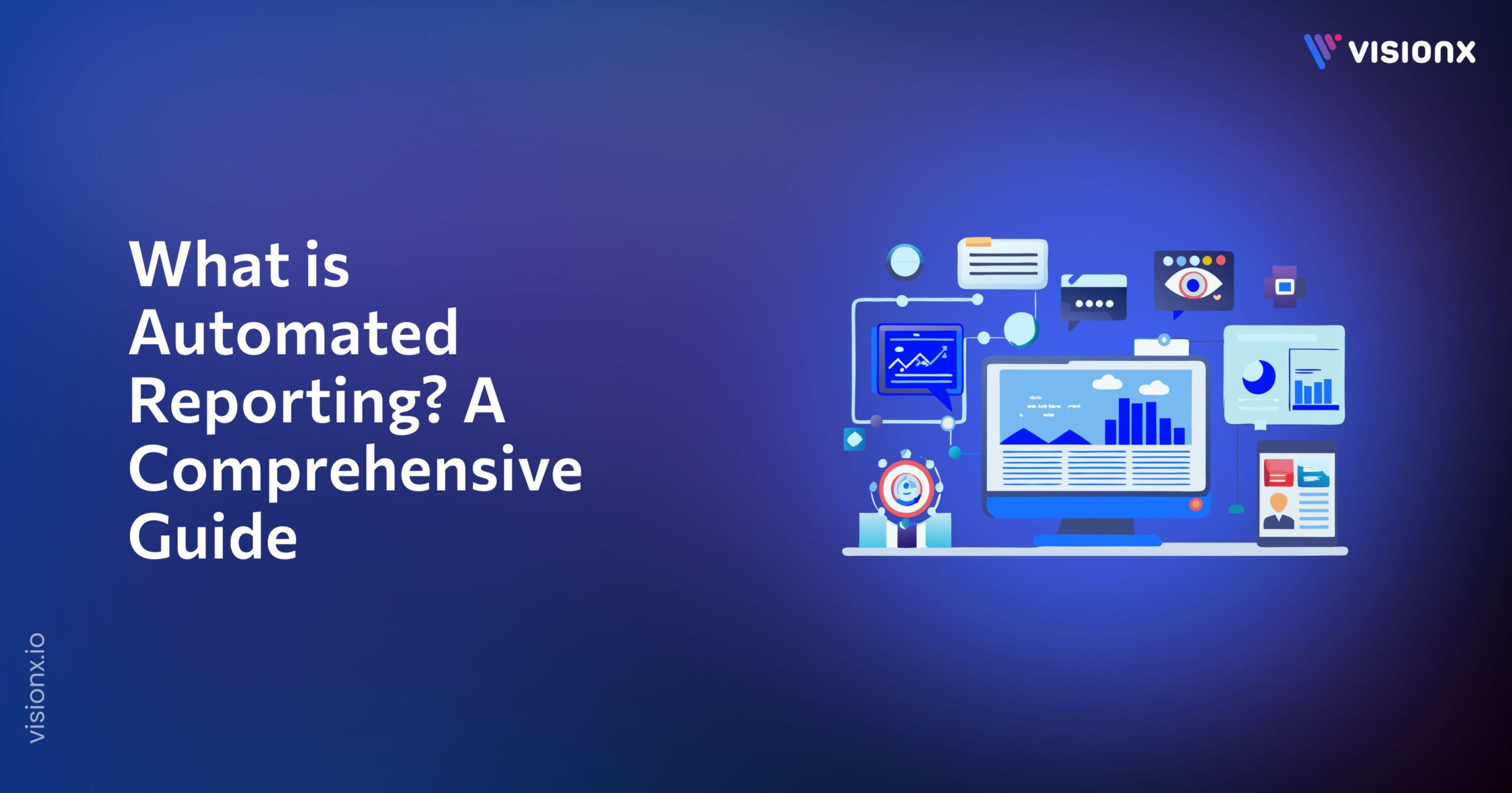Reports are intended to simplify life, but in many cases, they turn out to be the opposite, a source of stress. The process of accessing numbers, correcting errors, and adjusting data format takes hours that could have been used to make decisions based on the data.
In fact, human error from manual data entry can reach up to 40%. Automated reporting, on the other hand, completely transforms the entire experience. It gathers the correct data exactly when needed, allowing teams to spend less time compiling data and more time acting on it.
In this guide, we will go over what automated reporting is, how it works, and the various ways it can be used. We will also discuss the difficulties you could encounter and workable measures to establish reporting that truly advances your company.
Key Takeaways
- Automated reporting is the process of collecting, cleaning, and organizing reports automatically, removing manual work and reducing error rates.
- It delivers fast, accurate, and consistent reports through templates, real-time insights, and scheduled or triggered workflows.
- Teams save time, improve productivity, and make better decisions because reports arrive in a clean, ready-to-use format.
- A strong setup depends on clean data, clear goals, the right tools, user training, and ongoing improvement.
What is Automated Reporting?
Automated reporting is the process of using software solutions to collect data from multiple sources and automatically convert it into a complete report. The structure, calculations, visuals, and layout stay the same each time, so the final output is accurate and ready to use.
Key Differences Between Manual and Automated Reporting
| Factor | Manual Reporting | Automated Reporting |
| Speed | Slow because teams collect and prepare data by hand | Fast since reports generate automatically |
| Accuracy | Prone to human errors | High accuracy with direct data connections |
| Resource Use | Requires significant time and effort | Frees teams from repetitive tasks |
| Scalability | Hard to scale with more data and reports | Scales easily across teams and datasets |
| Consistency | Report format and quality vary | Delivers standardized, reliable outputs |
Common Misconceptions
A few misunderstandings often get in the way of adopting automated reporting:
- Some believe automation removes human judgment, when it actually supports it by presenting accurate information faster.
- Others think it is only useful for large companies, even though small teams save the most time from routine reports.
- Many assume automated reports cannot be customized, but modern tools allow flexible layouts, data sources, and visual styles after the initial setup.
How Automated Reporting Works
The report automaton runs on a simple idea. With the data pipeline in place, the system will automatically gather, prepare, and send out reports without the human resources having to work around the clock. All processes are integrated, so the end product is delivered to teams within the designated time and in a similar, clean format every cycle.
Core Components of an Automated Reporting System
Well-designed automated reporting systems depend on several important components working together to raise accuracy and efficiency.
1. Data Integration
The system links together various kinds of data sources like ERP and CRM systems, spreadsheets, or BI tools. It then extracts the data automatically, which lessens the effort and chances of errors that are usually involved in manual reporting.
2. Data Processing and Transformation
The data that was collected is cleaned and structured. The duplicates are eliminated, and missing values are dealt with. Automated data reporting gives a guarantee of consistent and reliable outcomes, which lowers the rate of human mistakes.
3. Report Templates and Design
Templates specify how charts, tables, and data visualizations will be organized. Report automation makes sure that all reports are uniformly professional and consistent. Use of templates can point out the most important performance indicators or metrics for respective teams or clients.
4. Automation Logic: Scheduling and Triggers
Reports can run either on a schedule or when certain requirements are met. Automated reporting tools offer insights just when needed, save time, and boost productivity.
5. Output and Distribution
Reports are distributed as PDFs, dashboards, or emails to the proper recipients. Some systems work with portals or collaboration tools. This guarantees teams can access insightful information while also keeping confidential data safe.
Typical Workflow: From Data Source to Report Delivery
Here is how everything in the automated reporting process flows from start to finish.
- Connect to relevant data sources
- Collect and clean the data using automated reporting tools
- Apply templates and create data visualizations
- Use automation rules to schedule or trigger the report
- Deliver the final report through email, dashboard, or portal
- Enable teams to make informed decisions with real-time insights
Types of Automated Reporting
Automated reporting provides several ways to provide the right data at the right moment. Every kind suits various company demands and allows teams to rapidly make intelligent decisions.
1. Scheduled Reports
Reports of this type are generated automatically at predefined time intervals, like daily, weekly, or monthly. With the use of automated reporting tools, the teams will receive updated insights all the time without the need to compile the data manually. Therefore, time will be saved and consistency will be maintained.
2. On-Demand Reports
Teams can create these reports whenever they require them. Reporting automation eliminates the lag normally caused by manual reporting by allowing one to quickly extract live data and generate immediate information.
3. Real-Time Alerts
Particular events, like a decline in sales or an inventory threshold, set off these reports. Reporting automation guarantees that teams have real-time access to insights right away, enabling quick response to vital data.
4. Batch Reports
Batch reporting involves multiple data sources, and reports are produced in large volumes. This technique is perfect when dealing with huge data sets, and it makes automated data reporting scale across departments.
5. Embedded Reports
Embedded reports get incorporated right into customer portals, apps, or dashboards. Teams and customers may monitor outcomes without having to wait for individual reports since they offer constant insight and important performance measures.
Benefits of Automated Reporting
The following are the benefits of report automation. Recent data shows that 60% of employees could save 30% of their time with workflow automation, which shows how much time reporting tools can return to teams.
Time and Cost Savings
The first change teams notice is the time they get back. Automated reporting tools gather and edit data on their own, therefore eliminating the many hours often spent on manual reporting. Operating expenses fall as well when this work vanishes, and teams can focus their attention on initiatives that really propel the company forward.
Increased Accuracy and Consistency
As the workload shifts, accuracy improves too. Manual reports require repeated copy and entry, so errors build up easily. Automated data reporting prevents these issues because the system pulls information directly from trusted data sources. This keeps every report consistent and reduces errors across the board.
Improved Efficiency and Productivity
Efficiency increases on its own once the data is reliable and consistent. Reporting automation simplifies daily chores, therefore reducing the mess and enabling groups to operate quickly without giving up command of the specifics. Fewer stages to handle cause productivity to increase, and teams turn more to analysis than preparation.
Enhanced Accessibility and Collaboration
Better productivity also helps to simplify cooperation. Dashboard, shared links, and scheduled updates let automated reporting systems provide data so everyone sees the same report version. This offers teams the ability to react together rather than in silos and builds a common image of performance.
Better Decision-Making with Real-Time Insights
Decisions become less difficult when everyone has equal data access with the use of automated data reporting. Real-time insights from automated reporting tools reveal changes as they happen. Leaders react quickly since they no longer wait for end-of-day or end-of-week updates, which helps to encourage more confident, informed decisions.
Professionalism and Branding
Presentation also gets better as the reporting system develops. Professionally presented images, branded layouts, and customized templates help to give every report a professional look. This helps to create trust when displaying automated reporting for customers and also makes internal reporting tidier.
Common Challenges and How to Overcome Them
Automated reporting delivers clear benefits, but a few challenges can slow progress. Most of them are easy to manage with the right setup and support.
Data Quality and Integration Issues
Automation depends on clean, structured data. When sources are messy, reports break. Setting validation rules and standard formats early keeps the system stable and prevents delays.
User Adoption and Training
Teams may hesitate when the workflow changes. Simple training sessions and clear guidance help users see how reporting automation reduces their workload, which improves adoption quickly.
Security and Compliance Concerns
Automated reporting often includes sensitive information. Strong permissions, encryption, and clear access rules keep the system compliant and protect data from misuse.
Design and Customization Limitations
Some tools limit how reports look or what can be customized. Choosing platforms with flexible templates and adjustable layouts helps maintain a clean, consistent design.
Cost and Resource Considerations
Initial setup may require tools, time, and support. Focusing on long-term value instead of upfront cost makes the transition easier and leads to stronger returns.
Best Practices for Implementing Automated Reporting
Good preparation and constant improvement are required for a robust automatic reporting system. Every stage draws upon the one before it to create a reliable, uniform, and team-friendly arrangement.
Define Clear Objectives and Reporting Needs
Everything begins with transparency. Teams must be aware of the relevant measures, the report frequency, and who consumes the information. Specific objectives define the whole reporting system.
Choose the Right Tools and Platforms
The next step is locating automated reporting tools that match the objectives when those are established. The ideal platform should grow with your reporting requirements, let you easily automate, and support your data sources.
Ensure Data Quality and Integration
Good automation needs clean data. Reports run without mistakes because of standard formats, steady links, and trustworthy sources. The reporting procedure remains consistent when the data is strong.
Develop and Test Report Templates
Templates determine information’s appearance. Early testing guarantees that layout, structure, and visuals fit requirements before automation starts.
Set Up Automation Rules and Workflows
The whole automated reporting system is driven by scheduling, triggers, and distribution guidelines. Establishing these guidelines precisely guarantees that the correct individuals receive reports at the appropriate time.
Train Users and Offer Continuous Assistance
A system operates best when everyone is familiar with it. Simple direction and brief training courses give confidence and enable teams to depend on automation in their everyday tasks.
Monitor, Evaluate, and Improve
Automation is not a one-time installation. Regular inspections enable catching problems, fine-tuning templates, and modifying procedures to meet changing reporting needs.
Popular Tools and Solutions for Automated Reporting
The best automated reporting results from appropriate tools, helping throughout the whole automated reporting process. Because different platforms have different advantages, knowing the primary groups enables teams to select a system suited for their long-term goals, data sources, and workflow.
BI Tools
These platforms center on real-time insights, data visualizations, and analytics. They interface with several data sources, automate reporting schedules, and facilitate rapid performance trend investigation. When teams want both automation and more in-depth analysis in the same location, BI tools are quite effective.
Dashboarding Platforms
Dashboarding apps produce interactive displays that change along with data. They aid teams in tracking main performance indicators and cut down on the labor needed in manual reporting. When a company demands clear, constantly updated views instead of static documents, these systems come in handy.
Low-Code and No-Code Tools
These techniques let groups automate reporting without requiring great technical knowledge. Building processes, cleaning data, and creating templates are made simpler by simple drag-and-drop interfaces.
Coding and Scripting Tools
Some teams favor total governance. Coding languages and scripting frameworks enable developers to create unique automated reporting tools that interface with complicated systems or manage major data streams. Although they require technical knowledge, they offer flexibility.
Tool for Reporting Publishing
These tools concentrate on compiling and sharing reports. They are made for brand templates, planned emails, and automatic file creation. They back companies that produce regular reports for customers or internal teams and want a constant, polished style on every occasion.
Key Features to Look For
A good automated reporting solution should support the full automated reporting process, not just one part of it. The most helpful tools share a few common features:
- Strong data connectivity so information flows smoothly from every source
- Reliable scheduling options for reports that need predictable delivery
- Custom templates that support branding and clear presentation
- Role-based access to protect sensitive information
- Easy automation workflows for handling triggers and repeated tasks
- Clean visualizations that make insights simple to understand
- Scalability, so the system grows as reporting needs expand
How VisionX Simplifies Automated Reporting for Businesses
VisionX empowers companies to introduce intelligence into their daily work process. Our goal is to ease data management, enhance accuracy, and provide insights on time.
Through integrating business intelligence, automation, and safe data management, we make sure reports are consistently accurate, readable, and easily available. Teams can make faster decisions as errors and time spent on repetitive reporting activities are reduced.
Ready to turn your reporting process into a reliable, automated workflow? Work with VisionX to streamline and improve your automated reporting systems.
FAQs
What are automated reports?
Reports that are generated automatically from a number of data sources. They offer regular insights, cut mistakes, and save time.
What is the difference between manual reporting and automated reporting?
Manual reporting, done by hand, can be error-prone and slow. Automated reporting automatically processes information, therefore increasing accuracy and speed.
What are the three types of reports?
On-demand reports are produced when necessary, scheduled reports run at fixed intervals, and trigger-based reports operate when particular conditions arise.
What does it mean if something is automated?
It implies that the procedure operates automatically following predetermined criteria, therefore lowering human labor and errors.
How can automated reporting improve business decision-making?
It helps teams to concentrate on analysis and strategy for faster, informed decisions by providing real-time insights, error reduction, and freeing up teams.


